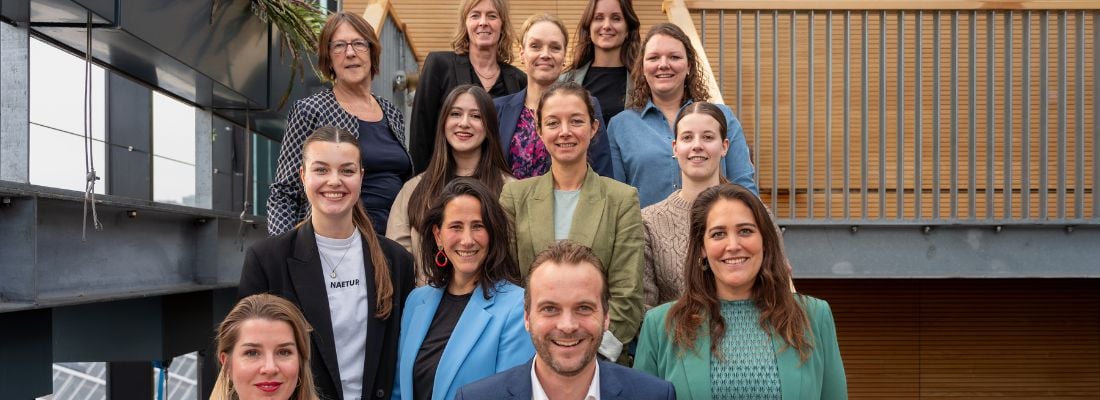The hidden strength of successful events
Events commence well before their official kick-off date: for exhibitors, they start with the build-up period, and for visitors, they begin as they travel to the location. The first impression can come well before the formal opening, and can set the tone in advance. What that tone ends up being is determined largely by logistics. As the traffic manager at RAI Amsterdam, I deal with intensive logistics flows originating from both visitors and build-up & breakdown traffic. How can you, as an organiser, work with the venue to ensure that the logistics runs as smoothly as possible, enabling you to offer your visitors and exhibitors the best experience?
Six tips for event logistics that make visitors and exhibitors happy
Tip 1: Know what to expect
If possible, you should prepare by looking carefully at the statistics of visitor numbers, distribution over the day and type of transport used in the past (good records are hopefully available from previous editions). This type of information lets us determine with a fair degree of accuracy which parking areas and garages we have to reserve and at what times the largest traffic flows are expected. We sometimes even use external parking lots for very large exhibitions. If you prepare well and inform visitors clearly, you will make sure no problems arise.
TIP: Make sure your visitor data is up-to-date and share with the venue, which can use it to prepare visitor logistics in the best possible way.
Tip 2: Avoid the rush hour
A particular bugbear of mine has always been the fact that most exhibitions start between 09:00 and 10:00 and end between 17:00 and 18:00. This means most visitors are practically forced to travel during rush hour. You’d be doing them a massive favour if you started and finished before or after the traffic. You can even use this to enhance your programme, for example by serving food at 18:00 in an informal setting that also facilitates networking. By planning start and end times outside of rush hour, you also reduce traffic in and around the city. And the biggest winners are the visitors, who can start the exhibition day without stress and travel home, to the hotel or airport hassle-free once it’s over.
TIP: Think about the possibilities to start and end the exhibition outside rush hour times. Business breakfast? Sunset session? Networking dinner?
Tip 3: Consultation on the build-up: logistic logic
Building up and breaking down the stands at an exhibition is a huge logistical operation that requires a lot of managing. We try to spread deliveries out over time and ensure that suppliers can get as close to the build-up site as possible. However, at large events with more than 1,000 exhibitors like ISE, IBC or PLMA, it is simply impossible for all trucks to reach the site at the same time. In these cases, we deploy a dedicated buffer area on the outskirts of the city to use space in the most efficient way. This ensures that trucks come to the RAI just in time and depart again as quickly as possible, preventing traffic jams in the neighbourhood and promoting a quick build-up.
As an organiser, there’s a great deal you can do. By looking at your exhibition floor plan together with representatives from the venue , you can considerably simplify the build-up and breakdown process. For example, it is wise to not plan for large and complex stands at the entry points as this risks complicating the supply of the entire hall. Some organisers even work with a phased build-up process, where the hall is divided into different sections each given their own timeslot. The segments left empty at a given time can then be used by trucks to get as close as possible to the segments under construction at that time. This is faster, safer, less disruptive to the surrounding area and more pleasant for the exhibitors.
TIP: Involve the venue when designing the exhibition floor plan and determine together what you can do to make the build-up and breakdown process as easy as possible for exhibitors.
Tip 4: Work on safety together
Safety is, of course, of the utmost importance during the build-up and breakdown periods of an exhibition. This is why every location, including the RAI, has safety regulations. In addition, there are options that allow you as an organiser to make the build-up process safer. Many organisers now prohibit manual unloading, for instance – forklifts make it faster and safer. We welcome this, of course. We have a special parking garage for vans : P4 has a vertical clearance of 2.70 m (the standard is 1.90), which allows them to park safely and comfortably on the premises. Another option is the porter service, which moves items from P4 to the right place in the exhibition hall.
TIP: Every venue has options for increasing safety. Discuss them in advance and ensure that exhibitors and their suppliers are aware of them.
Tip 5: Make use of public transport
RAI Amsterdam is easily accessible by all modes of transportation, including public transport. It takes just 10 minutes to reach the Amsterdam RAI railway station by train from Schiphol Airport. Although many business visitors in particular have a preference for taxis, there are also more and more visitors who appreciate public transport; it is more sustainable, gives more of a feel for the city and, in many cases, is faster, too. Once the new North-South line of the Amsterdam metro opens in July, things will become even easier: every visitor to the RAI will be able to reach the city centre within minutes.
TIP: Every large exhibition building has public transport options. Encourage guests to use them by clearly indicating times, stations and fares to and from key locations such as airports, stations and major hotels. Every target group is different, but more and more visitors appreciate a sustainable alternative for their transport needs.
Tip 6: Always think ahead
The world is changing and we are aiming to improve our logistics with every event. For example, the RAI works together with external research institutes such as the Delft University of Technology and Nyrenrode Business University. During an event such as Intertraffic, we seize the opportunity to challenge experts to contribute their ideas. Are there new possibilities that are more logical, sustainable or safer than old methods? What about taxi sharing, for instance? After all, it makes a difference whether an exhibition is followed by 1,000 or 2,000 taxi rides. There’s a lot of potential gain in this context, especially in the field of sustainability. We are also thinking about solutions to make loading and unloading trucks more efficient, for example with a central unloading point and a conveyor belt. And then there is my favourite question: how can we work with organisers to reduce rush hour traffic?
TIP: There are always opportunities to make logistics smarter, faster, safer and more sustainable. We want that too: on the one hand to relieve the pressure on the city, and on the other to offer exhibitors and visitors an even better experience. We enjoy working together with organisers on these topics. So if you have any questions or a good suggestion, let us know so we can share ideas.
Share your stories with us!
Do you have an innovation or interesting news you would like to share with the professional cleaning and hygiene industry? The Interclean website and social media channels are a great platform to showcase your stories!
Please contact our press department interclean@rai.nl.
Are you an Interclean exhibitor?
Make sure you add your latest press releases to your Company Profile in the Exhibitor Portal for free exposure.
Receive the best newsletter on cleaning & hygiene - straight to your inbox!
We promise never to send you spam and you can unsubscribe at any time!








